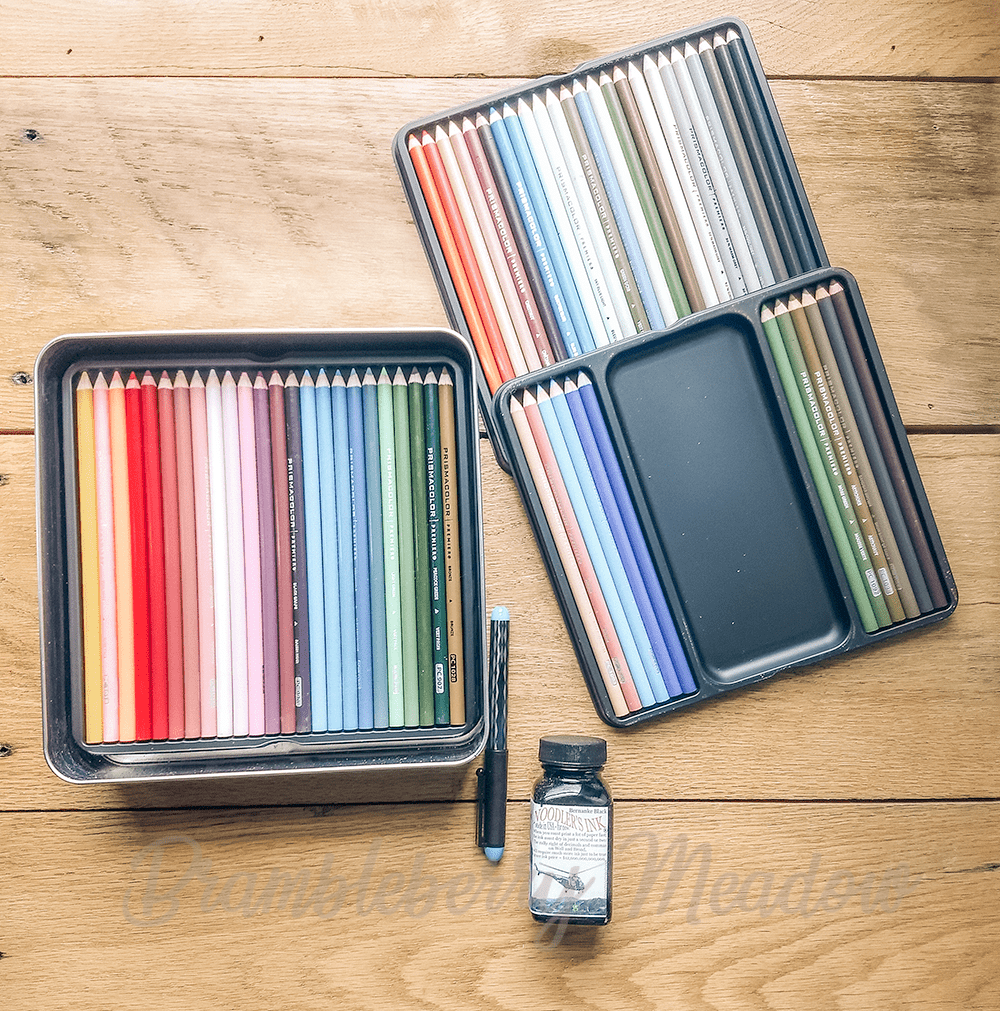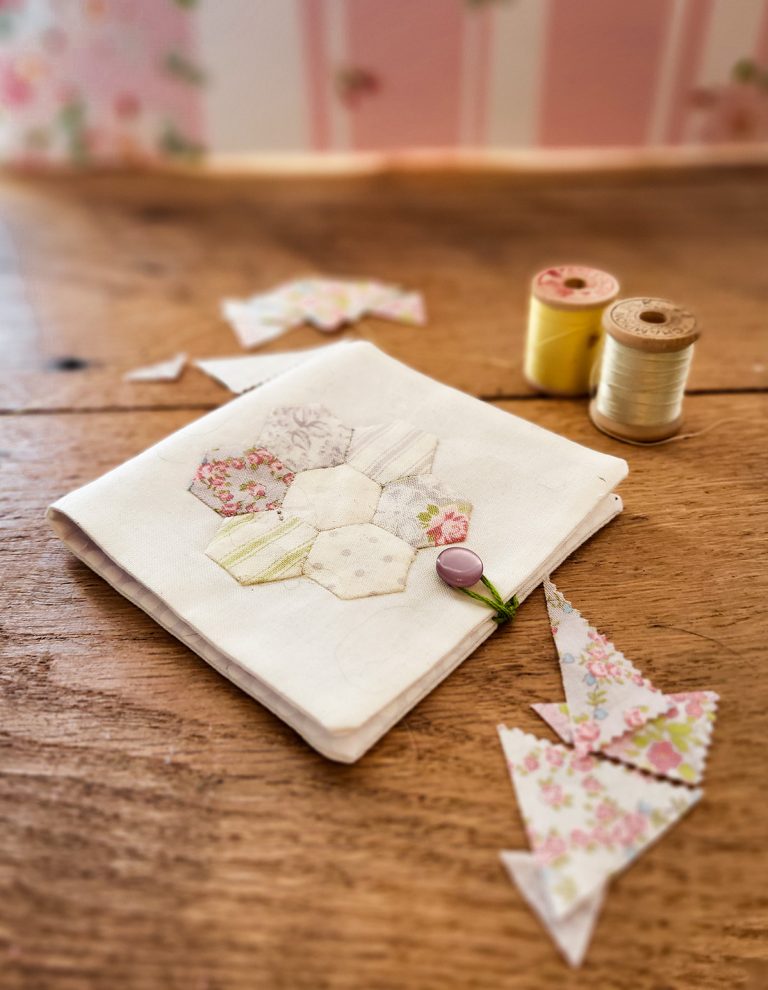Journals for the Homestead
I’ve been spending a bit of time lately both exploring some vintage recipes that I’ll share later and also trying to do a bit more research on that Swedish tile stove we got. The first thing has required me to find and read through quite a number of vintage cookbooks, the better if there are notes in it from people who’ve used them before me. The second, I find, may require me to go to one of the locations that hold Ralph Hauenstein’s papers.
Which got me to thinking: I’m really only able to find things out based on the habits of other people to write them down. Whether that’s notes on just how much flour that cookie recipe needs, or a letter that might have accompanied a gift from a foreign power, the paper trail is important.
And, for someone who is extremely fond of books, stationery, and other papery goodness – I find I’m not leaving much of a paper trail. 1’s and 0’s, yes. Paper? Not so much.
That, gentle reader, should change.
Toward that end, part of my goal setting for the new year is to start and maintain a variety of journals for the homestead. What kind, you might ask? Why? How?
First, let’s talk about the types of journals you might want to start.
A Garden Journal
If you keep a garden – small or large – you ought to keep a garden journal. It will help you remember what succeeded, what failed, and maybe determine why.
Your garden journal can be as simple or as complex as you want it to be. At a minimum, you’ll want to draw a sketch of your garden, fill in what got planted where, and possibly have multiple sketches if you pull out early spring crops and replant in a single year. Record the dates you sowed your seed, whether you started them indoors or directly, and when you transplanted. Then, also make some notes as you harvest about the quality and quantity of your yield.
Do you mulch your beds? Record what you used and when you applied it. What soil amendments did you introduce? Any use of fertilizers or strategies for weed and pest control?
Then, if you’re my mother, you’ll also calculate the “degree days” as they add up, and use that information to suggest the best planting times.
A garden journal can be strictly informational. Or you can write your thoughts about your garden, the weather, or whatever you like about it.
A Kitchen Journal
Another place to keep a journal at hand is in the kitchen. Here, you can make notes about new recipes you try, what changes you made, and how they turned out. Keeping track of your tweaks will help you repeat successes, especially if it’s something your family really enjoyed.
If you had to improvise, because you were out of something, jot it down. Sometimes the new version is superior to the old. You may find yourself developing recipes as you go.
Kitchen journals can be real treasures to children, grandchildren, or sometimes odd folks like me who just enjoy vintage recipes. In fact, my newest cookbook was developed using a trove of 5 kitchen journals kept by a professional baker in the 1920’s. That cookbook is written in Frisian, so my copy will eventually be annotated with my various attempts to translate the recipes, as well.
Kitchen journals are probably best kept simple and use a pen with ink that won’t run if you dribble a little water on it. I’ve used everything from composition books to the backs of envelopes – that get transferred into a nicer journal later.

Farm Journals
If you have any type of livestock, good record keeping is important. Everything from when you had to feed hay, to how much you used, to how you managed your pastures can help plan for next years’ feed needs. This is true also for how many bags of feed you had to buy for your chickens, how many of them you fed, and what your yields were in terms of eggs and meat.
Breeding records ought to be kept separately, and in a place where you won’t lose track of them. But there is no reason you can’t have a bit of redundancy in your record-keeping, making sure to also keep track of breedings, due dates, actual calving/lambing/farrowing dates, who had twins, and so on.
This is also a good place to record milk yields, fleece weights, and micron testing, carcass weights, etc.
Craft Journals
No, I don’t mean making your journals. (Although you could, and we’ll talk about that later). I mean keeping notes on your various crafts. Are you a knitter? Keep notes of your projects, pattern, yarn used, how much was actually left over, etc. Especially if you find the sizing of the pattern to be different than what’s printed with the pattern. That way, you can save yourself time and trouble if you want to make it again.
The same is true for sewing – and maybe glue in some swatches, woodworking, cheesemaking, beer brewing, soap making, or whatever you enjoy. Keeping track of what you’ve managed to make will be fun to look back on later, inspiring, and helpful in new project planning.
What Kind of Journal to Buy
Journals for the homestead are something you’re likely to want to keep around. So I recommend bound versions. Sketchbooks work well for things like garden journals or craft journals, where you’re likely to want to sketch things in. Kitchen or livestock journals are sometimes better suited for something with lined or gridded paper.

I do have one spiral-bound volume. But that one gets used as a genuine sketchbook, rather than a journal, proper. I also keep small spiral-bound books in my pockets for quick notations, measurements, or jotting down thoughts when I’m out and about.
For sketchbooks, you’ll find a variety of sizes and styles. Here I have one softcover journal with the cork-print. And two hardcovers in different sizes. The VERY small hardcover journals (around 4″x6″) are awfully hard to use effectively. They’re just too small to put much on each page. And prone to get lost easily. The largest journal is almost too large unless you want to combine text and sketching. Otherwise, making lists as one often does in a subject journal, tends to waste a lot of paper space. Paper type is a matter of preference. Mine are mostly sketch paper. This works well for most purposes, although it doesn’t like to get wet. If you want to add artwork like watercolors to your journal, you’ll want something with somewhat heavier paper. Most bound art paper books are acid-free but double-check to be sure.
I get a lot of my sketchbooks from craft stores when they’re on sale, or online from Dick Blick if I’m buying a few at a time.
Other materials
Keeping journals for a homestead should be a contemplative, enjoyable experience. So choose good pens, that aren’t frustrating to write with. I like a nice fountain pen, but whatever you choose make sure the ink is acid-free. Multiple colors can be fun and help keep things organized.
If you want to add sketches of your garden or projects, you may want something to color them with. I have both regular and watercolor pencils. I like both, although I’m unlikely to use water in my journals. Alcohol inks and watercolors are more options. Feel free to have fun, it’s your journal!

Pin this post:







